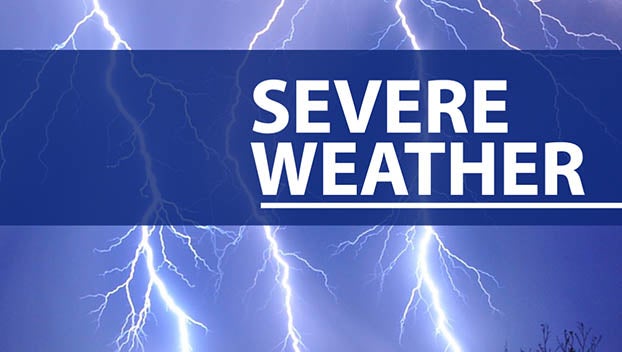Witness recounts Hansen’s execution
Published 5:00 am Thursday, July 18, 2002
PARCHMAN — I arrived at the makeshift media center shortlyafter 11 a.m. Wednesday. Jennifer Griffin, Mississippi Departmentof Corrections Communications Director, was giving the first offour briefings about what would be the last day of Tracy AlanHansen’s life.
He was served a breakfast of beef, potatoes and gravy, grits,biscuits, jelly, coffee and milk. He ate it all.
“Inmate Hansen is observed to be extremely talkative andsomewhat anxious. He has spent time writing letters, rubbing hishead and asks numerous questions,” she said.
We would later learn that Hansen wrote and mailed 23 lettersWednesday. No other information was provided about thecorrespondence.
Hansen had access to a telephone to place unlimited calls from 8a.m. to 5 p.m. both Tuesday and Wednesday. He made 10 calls between9:30 and 12:49 p.m. Wednesday, including two to his father,Lawrence Hansen. The first conversation lasted 56 minutes; thesecond one 17 minutes. He unsuccessfully tried to reach hisbrother, Scott Hansen.
We were told that the inmate had requested a seafood dinner forhis last meal. He would be served broiled lobster, shrimp, scallopsand crab meat served with clarified butter and cocktail sauce,fried fish fillet and oysters with tarter sauce, Pepsi Cola andchocolate morsels for dessert.
Handouts included copies of two affidavits Hansen had signedearlier. On July 11, he authorized the American Cremation Societyof Memphis to cremate his remains. On July 12, he authorized thatnone of his family members be present for the execution. Heauthorized that his two attorneys and his spiritual advisor attend,and they did.
In between the media briefings, the reporters and photographerspassed the time as best they could in a facility that usuallyserves as the processing center for prison visitors. Theunairconditioned cinder block building resembles a gymnasium. Signsadvise that taking money or contraband into the prison area willresult in arrest. Signs also advise that all visitors must wearunderwear.
At the four o’clock briefing, we were told that Hansen wasvisiting with his attorneys and spiritual advisor, who had beenwith him since 1:23 that afternoon. He would be offered 2milligrams of Ativan, a sedative, at 5 p.m., but he had notrequested any medication at that time. The hearse would exit theprison by traveling north on Highway 49.
At 4:30, the eight media witnesses were taken to a separate roomfor a briefing by prison officials. We were not allowed to takeanything with us. The prison provided note pads and pens.
We were briefed on what to expect. The inmate would already bestrapped to the gurney by the time we arrived in the observationroom, and the IV would be in place.
The reporters, who were selected by a random lottery to bewitnesses, would be divided into groups of four by another lottery.Four would be in the room designated for the condemned man’switnesses. Four would be in the room designated for the victim’switnesses; that’s where I would be.
We were given special passes for the observation room. One byone, we were taken into a separate room and searched. Shoes, andfor some, socks were removed so the bottoms of feet could beinspected. They “patted down” our hair.
Just after 5:30 p.m. the media witnesses were taken to vans tobe transported to the maximum security unit where the executionwould take place.
Hansen was immediately visible to us as we stepped into theobservation room. He could not see us through the two-way mirror.He was wearing a red jumpsuit, required attire for all death rowinmates in Mississippi, and black flip-flops.
Leather straps bound him to the gurney at the ankles, thighs andwaist. Two straps crisscrossed his chest. The fingers on both handswere bound together with something that looked like an Ace bandage,and his arms were also strapped down.
We could not hear what was being said at this time, but theinmate was talking to four men who were standing behind the gurneyon his right side. They appeared to be listening to him, but I didnot see any response from them. We learned later that two of themen were clergy, one was a coroner and the other was the statemedical examiner.
The media witnesses were in the room alone for a short whilebefore members of Highway Patrolman Bruce Ladner’s family entered.We had been advised that the Ladner family did not wish to speak tothe media, and their request was honored.
Trooper Ladner’s two sons, Damon and Brandon, stood directly infront of the glass that separated them from their father’s killer.They were accompanied by their uncle, Kirk Ladner, who stood behindthem, and attorney Herman Cox, who was the assistant districtattorney who prosecuted Tracy Hansen.
The young men stood shoulder-to-shoulder as Hansen made a long,rambling last statement in which he expressed regret for killingthe highway patrolman in 1987.
“I know he loved his family,” Hansen said. “I’m sorry . . .” Hewas looking in the direction of the Ladners, but he could not seethem.
The inmate also stated his opposition to the death penalty.
“I don’t want to go. I’d rather be here.”
Soon after the microphone was lifted away from Hansen, the drugsused to kill him began flowing through the tubes at 6:22 p.m.
Again, he briefly looked to his left toward the witness room,before turning away and closing his eyes. He briefly opened hiseyes, appeared to swallow hard, exhaled, and closed his eyes. Hedid not move again.
With the exception of pens moving across paper, the witness roomwas silent.
At 6:32 p.m., Tracy Alan Hansen was pronounced dead.
Kirk Ladner reached up and patted his nephews on theirshoulders. They were immediately taken out of the witness area to aprivate location.
In 10 minutes it was over. To me, it seemed like aneternity.
I can only imagine what the last 15 years have been like for theLadner family.




